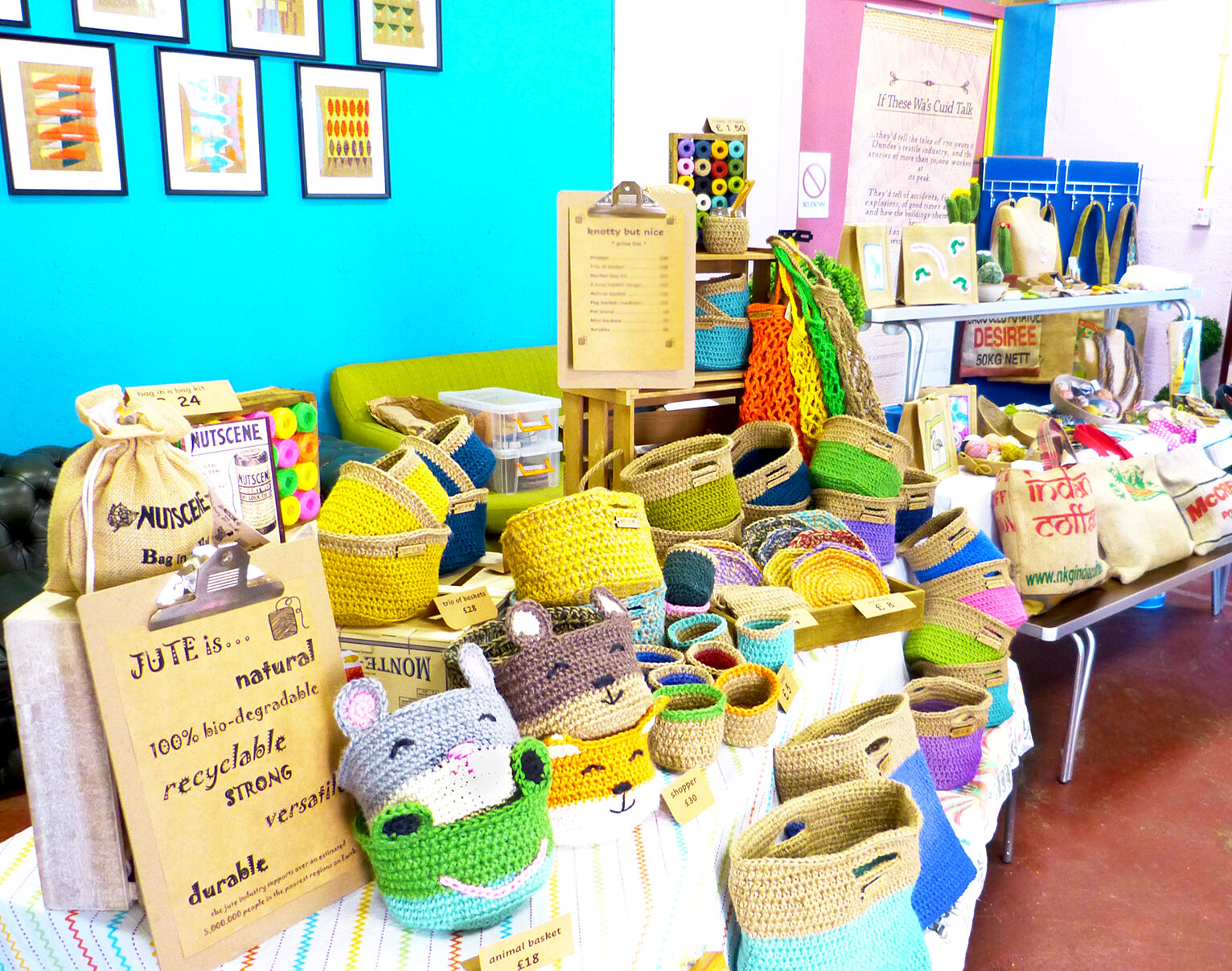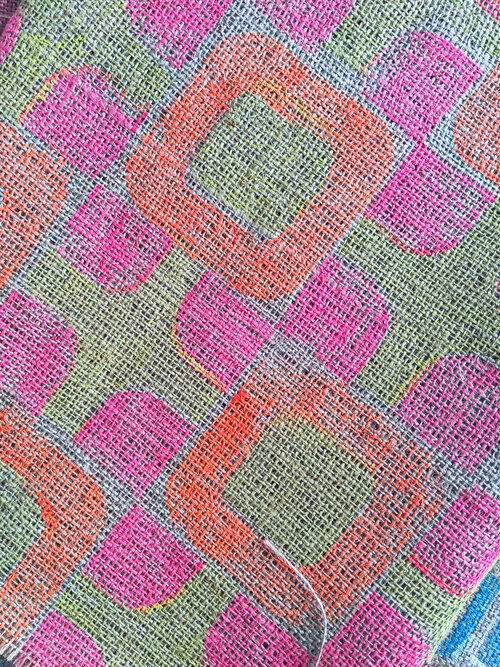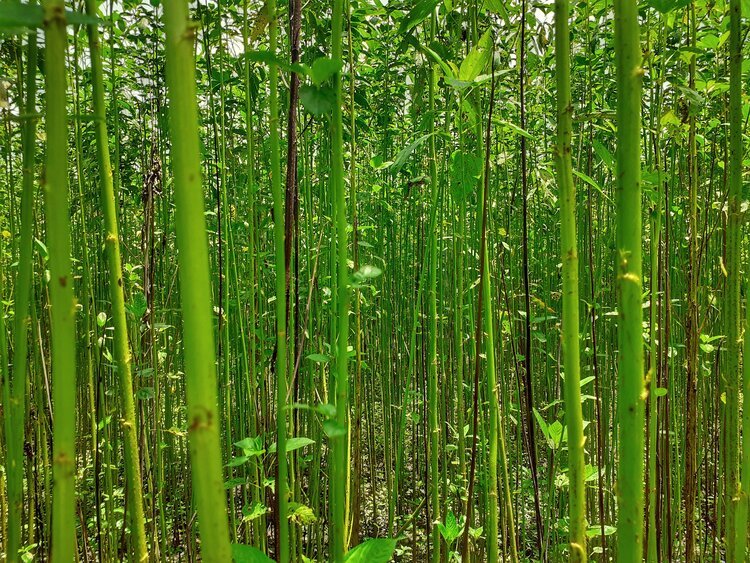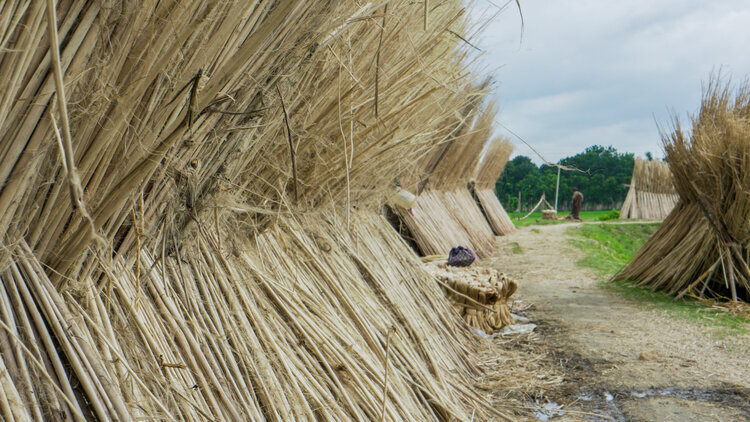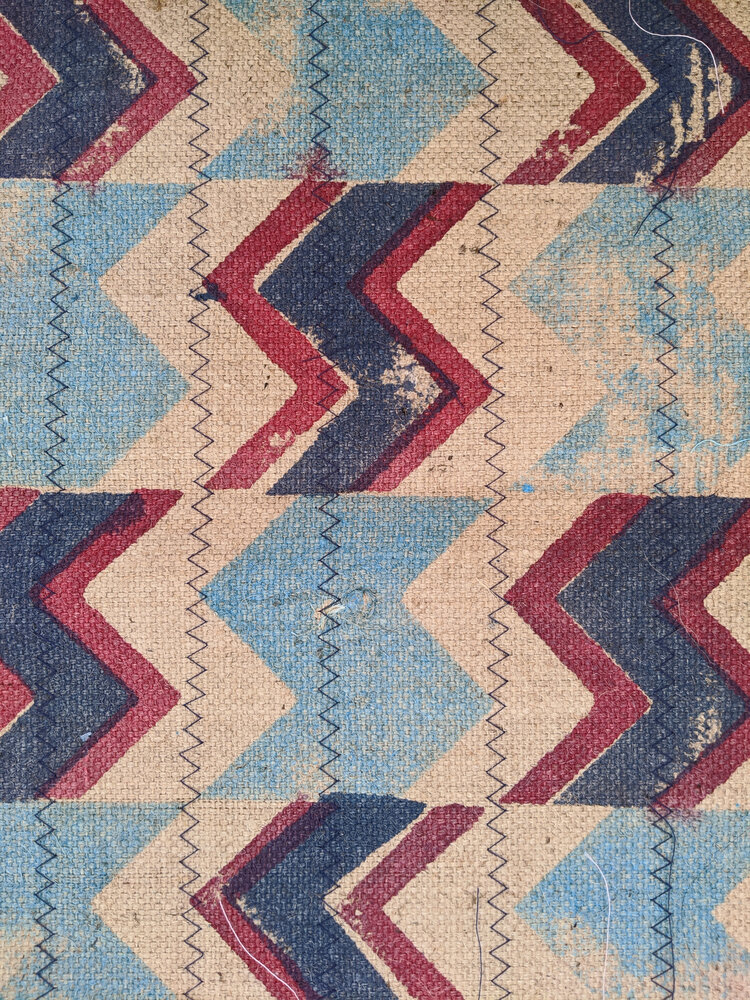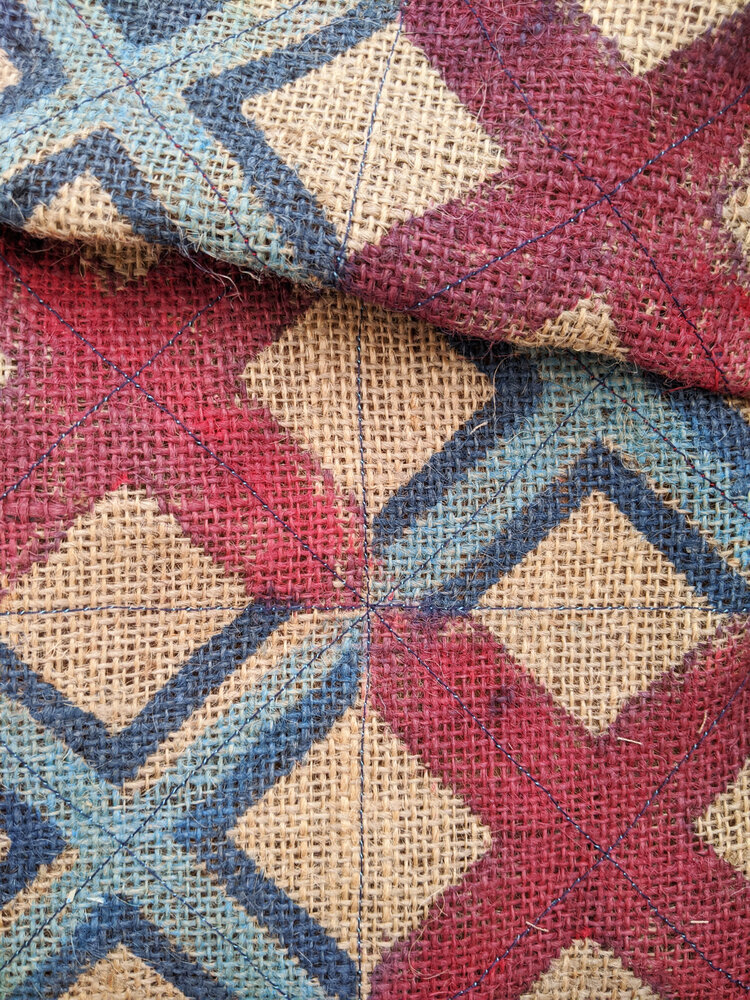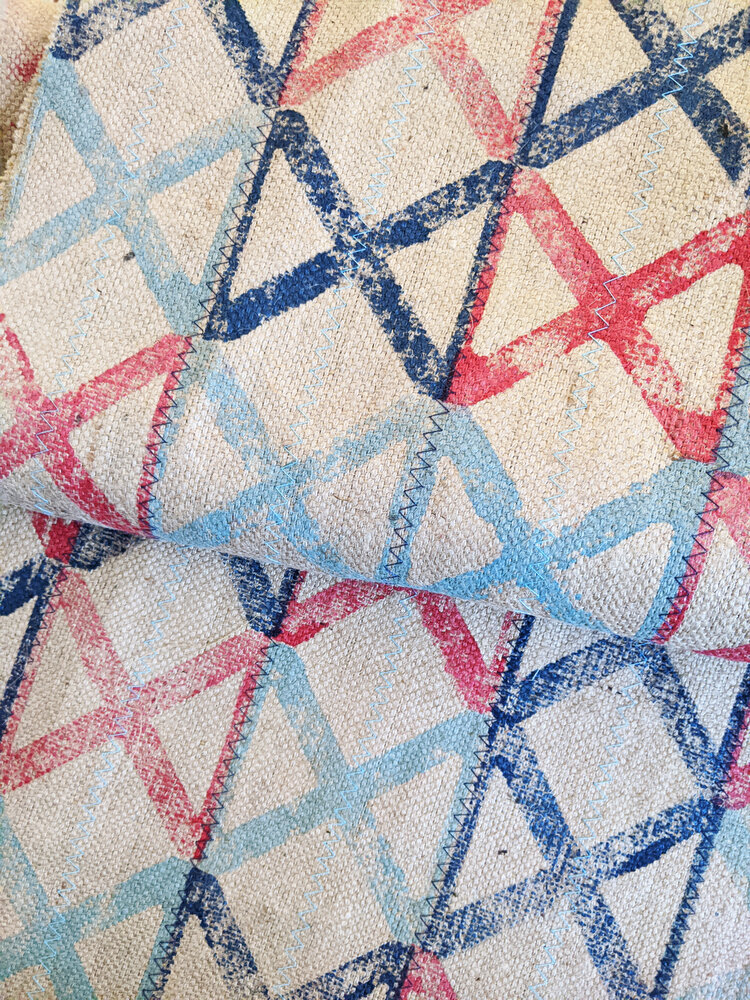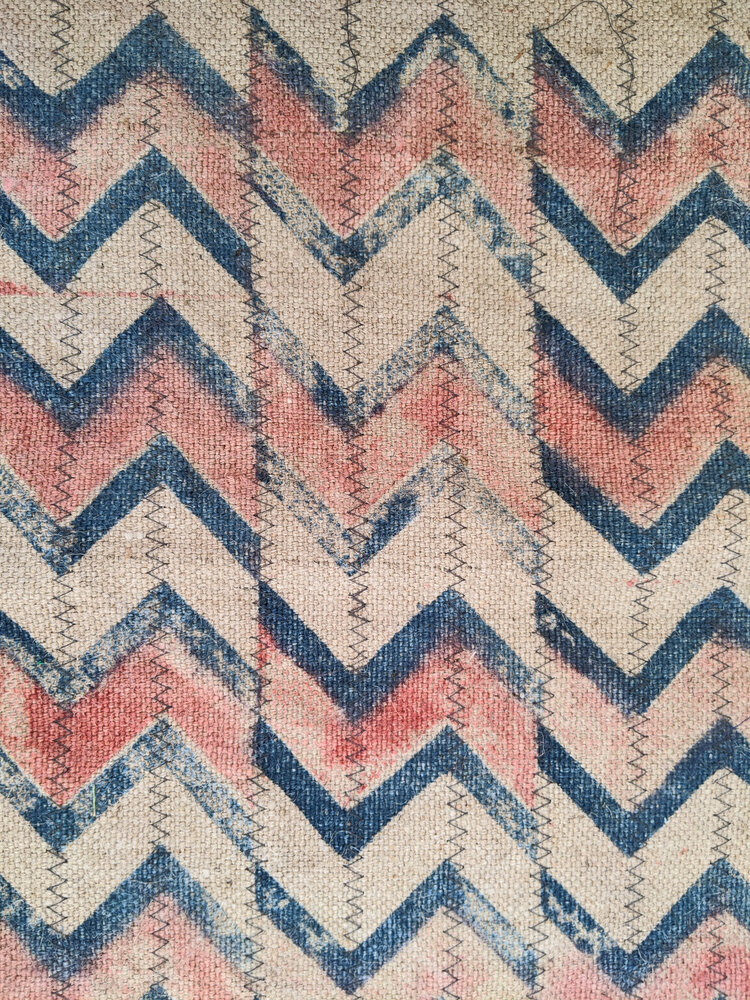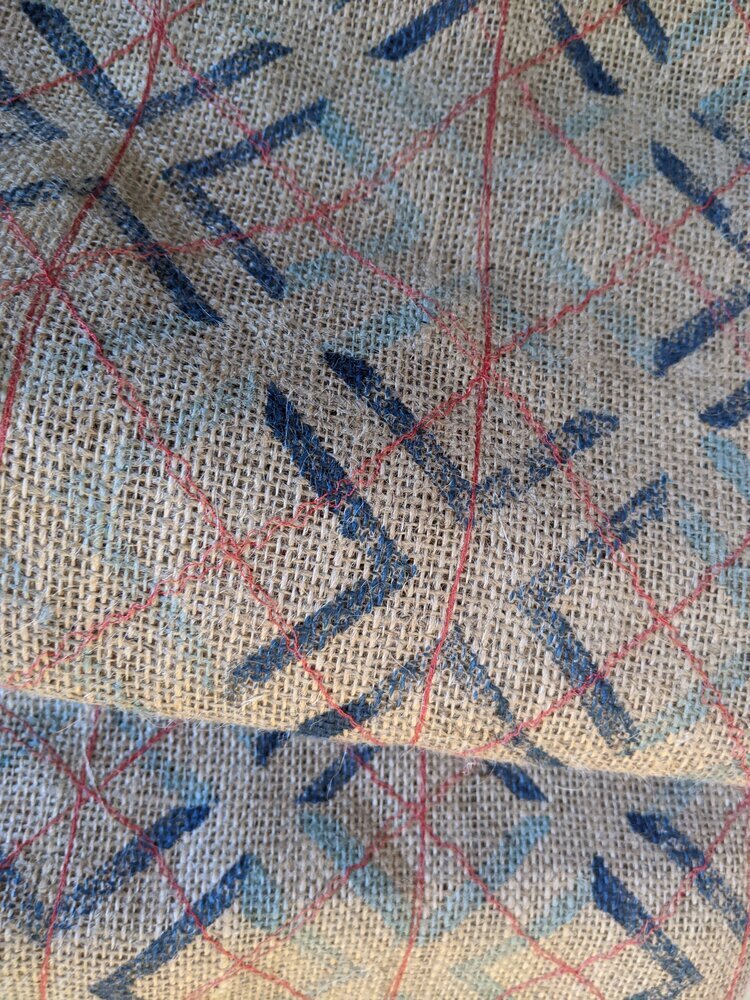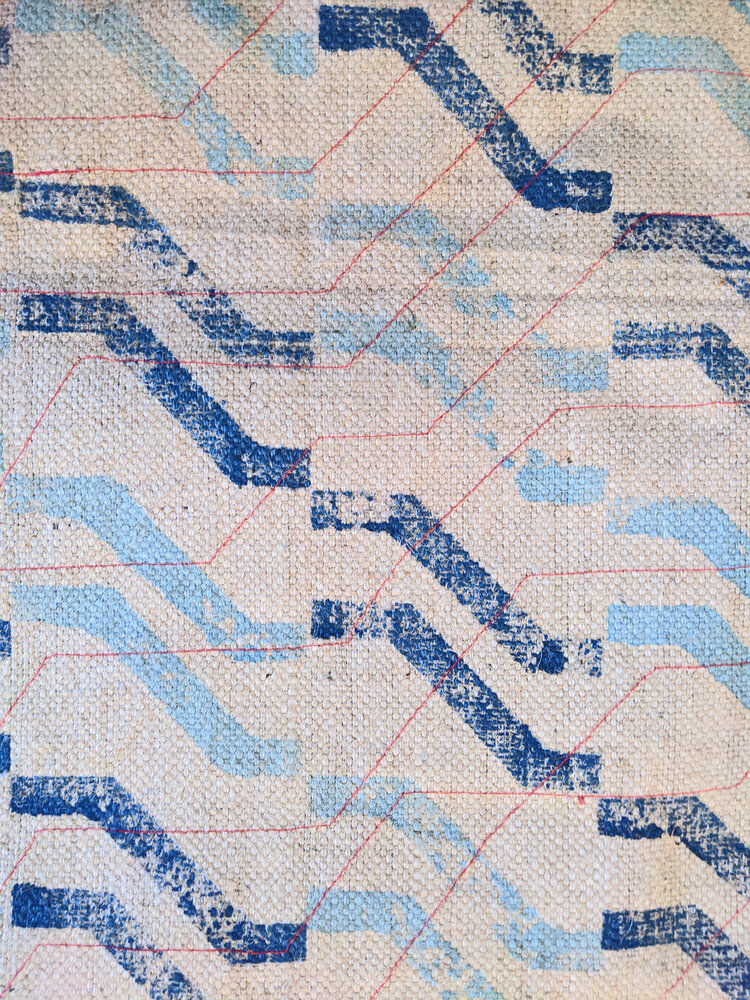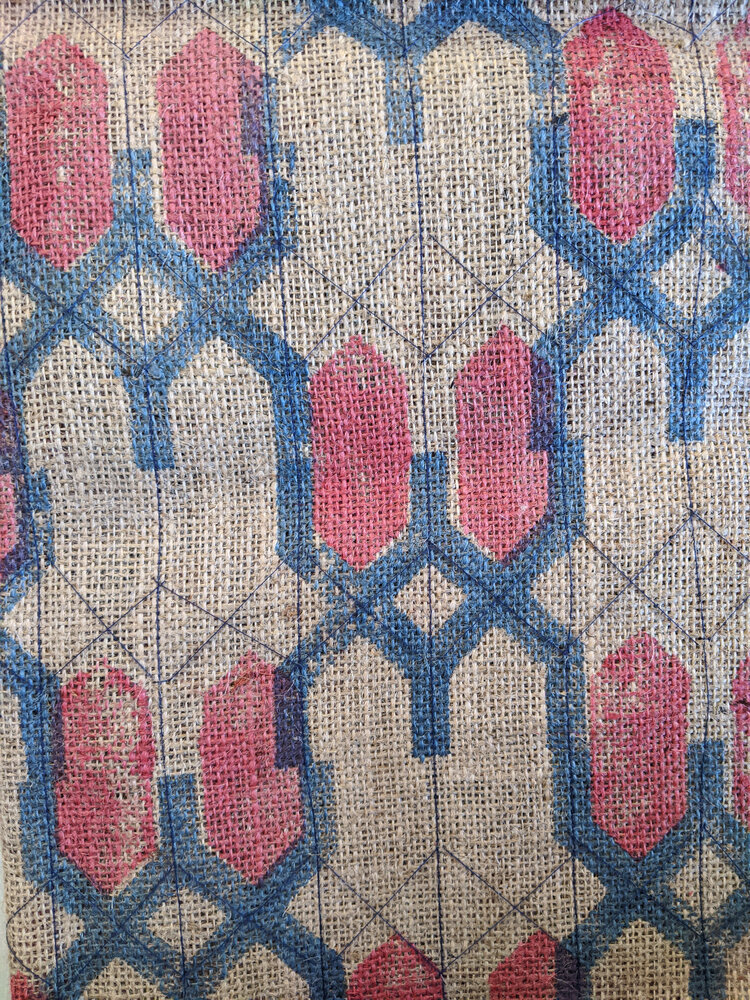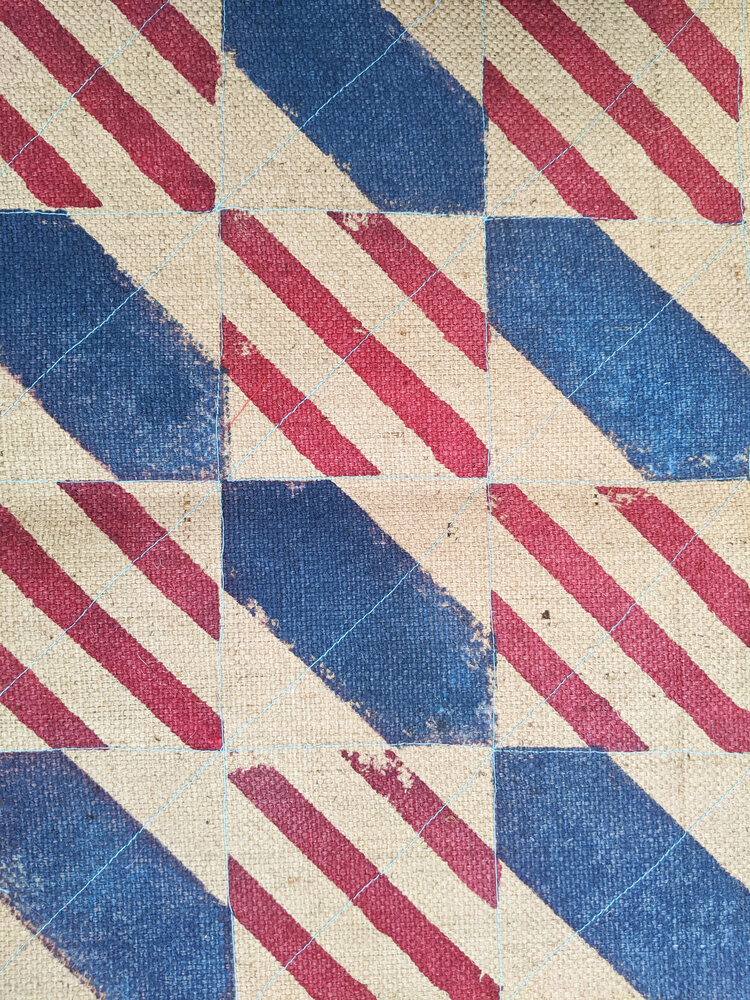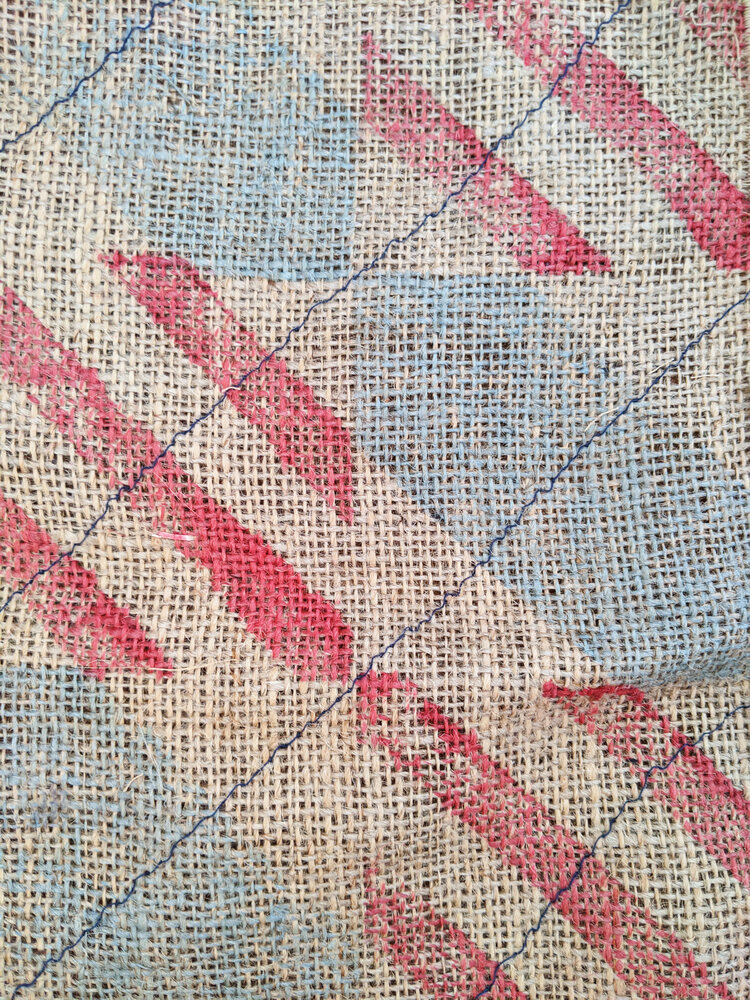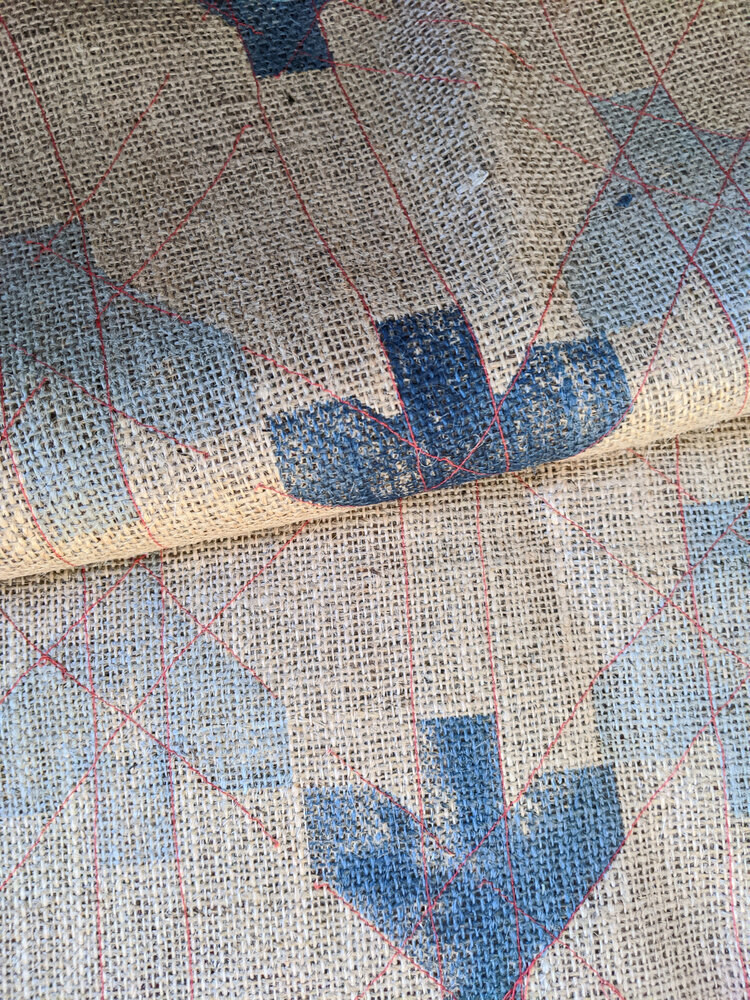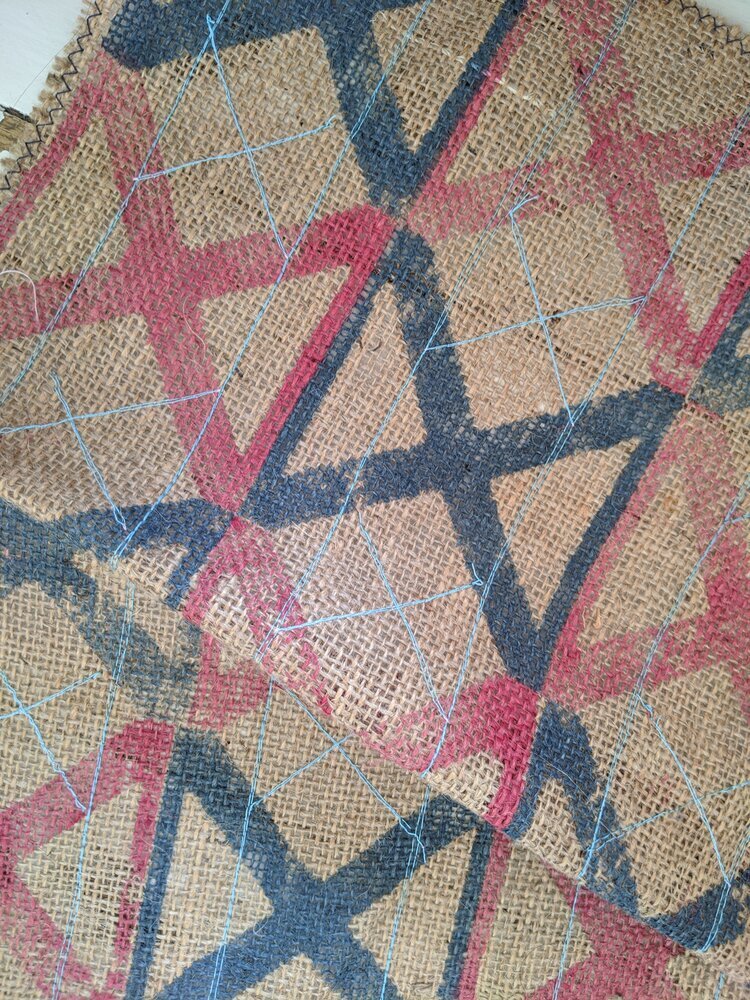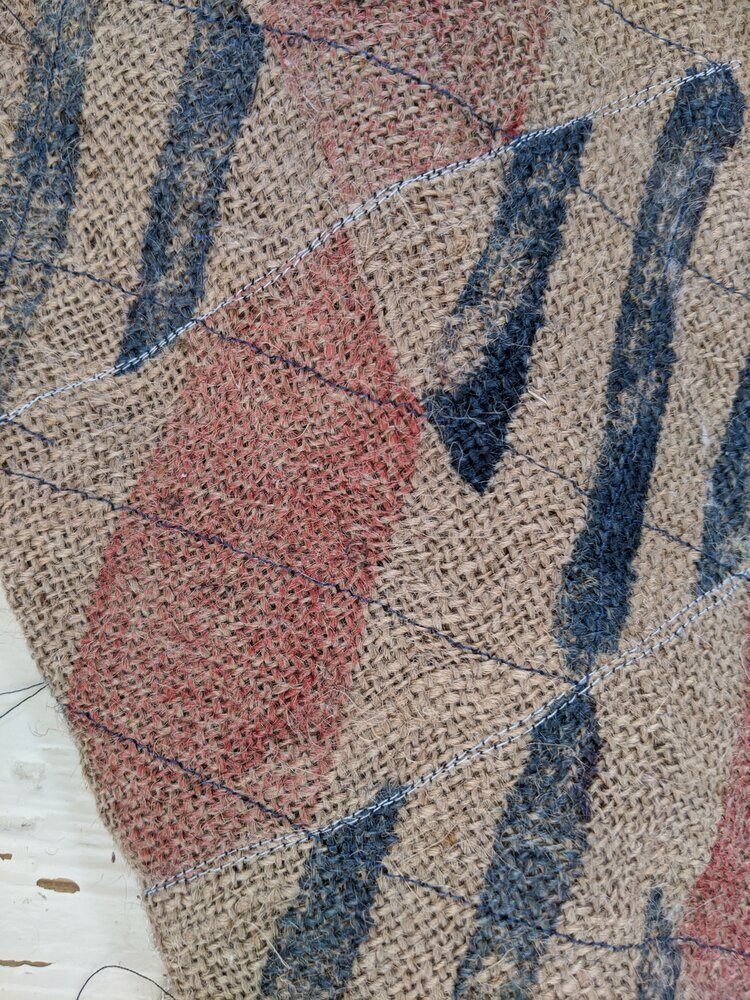hello! we’re so sorry to have had to share the bad news with you on saturday, about the cancellation of our last jutefest event. i hope you haven’t travelled to dundee this weekend! if you haven’t heard, the very last jutefest was unfortunately cancelled due to staff having to isolate at the venue (scrapantics, our landlords have been utterly fantastic about this whole venture though so huge thanks to them!). and to be honest, for it only to happen to the last in a series of 4 is not a bad record, so we are celebrating our success and we are also thinking about how to come back with something bigger and better next year perhaps.
so if you only just heard of us, the best is yet to come. jutefest consists of three of us - jist jute, knotty but nice, and zitozza. because we all work with jute in different, but consistently modern and contemporary ways, we set out to bring the cloth back to its city and celebrate its sustainable qualities - and maybe showing the locals along the way why it’s cool again! while dundee has an enormous heritage to build on, jute is not a thing of the past but very much the future too.
photo by deborah chapman at artantics
photo by deborah chapman at artantics
we’ve done a lot of cool things together and it’s been an achievement in itself, i think, to pull this off on a shoestring with a few weeks notice. indeed there’s a lot of potential in our abilities to do something bigger and better soon! throughout the event series, alison has successfully managed to crowdfund a whole weaving loom and lessons to learn to weave - you can see the progress of all this on her instagram along with the first pieces. don’t they look fabulous? and maite was busy crocheting, unstoppably producing her work live at the fair whilst chatting to visitors about those durable bags! it was fascinating to witness that speed.
as for zitozza - of course, the embroidered wall-art collection also debuted at the jutefest and it did look good on the turqouise wall of the venue! and as a demonstration of our craft, two smaller lengths of fabric were printed live in front of enthusiastic visitors... i think one will become a lampshade, and the other a rug (see the pictures below!) and it’s coming very soon so watch this space and subscribe to the newsletter, to make sure you don’t miss out on any of our new plans (and the nice things made of these!)


